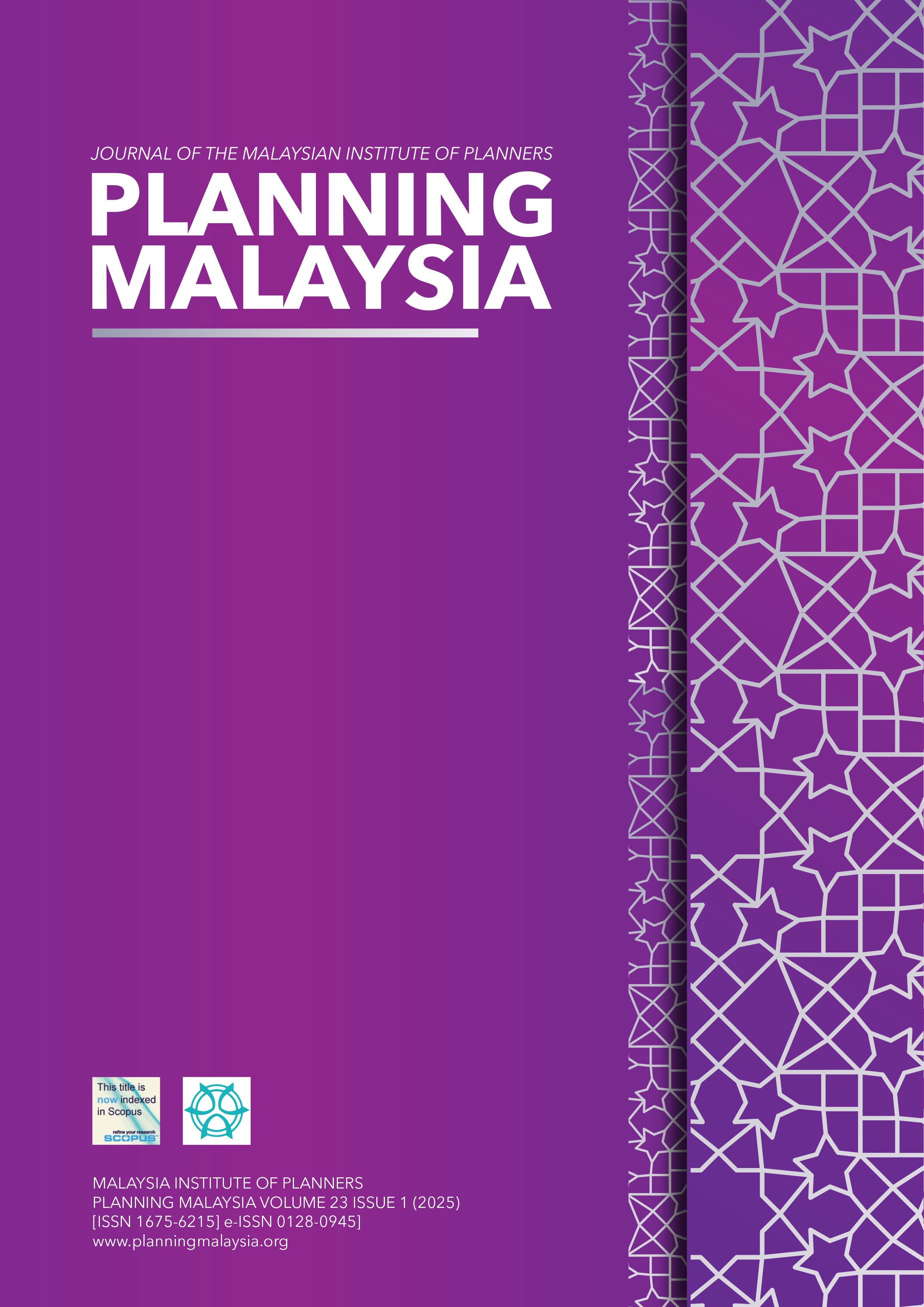IMPACT OF POST-COVID 19 ECONOMIC CRISES ON AFFORDABILITY OF RENTAL HOUSING IN RAJSHAHI: AN ANALYSIS BASED ON RESIDUAL INCOME
DOI:
https://doi.org/10.21837/pm.v23i35.1686Keywords:
Housing Affordability, Post-COVID Economic Crisis, Non-Housing Expenditures, Residual Income Approach, Housing Induced PovertyAbstract
Housing has always been a consistent and globally recognized urban challenge that remains largely unresolved. Meanwhile, affordability lies at the heart of most housing issues. The post-COVID global economic uncertainty has further enhanced this problem, as the living costs continue to rise at an alarming rate. In countries like Bangladesh, the situation is even more complex due to its large population. As being the third-largest metropolitan city, Rajshahi faces severe challenges in addressing housing affordability. In most of the cases household incomes and living standards have remained constant, but rising inflation and other post-COVID economic pressures have increased the cost of living. This has a direct impact on the rental housing affordability in Rajshahi. After paying for the unavoidable non-housing costs, the remaining amount is insufficient for house rents or expenditures, leading to a significant housing cost burden for renters. This paper employs a residual income-based method to examine the effect of the economic crisis after COVID on rental affordability in Rajshahi, offering a comparative analysis of the pre-COVID situation. It is anticipated that this paper will broaden future research opportunities and contribute to the implementation of the required policies to address this issue.
Downloads
References
Asaduzzaman, M., & Hameem, S. (2021). Measuring Affordability of the Middle Income Group for Residential House Price in Real Estate Sector of Rajshahi , Bangladesh. American Scientific Research Journal for Engineering, Technology, and Sciences (ASRJETS), 82, 1–10.
Bangladesh Bureau of Statistics. (2022). Month : January 2019 Consumer Price Index ( CPI ), Inflation Rate and Wage Rate Index ( WRI ) in Bangladesh Bangladesh Bureau of Statistics ( BBS ). January.
Bangladesh Bureau of Statistics (BBS). (2021a). building material price index. 10.
Bangladesh Bureau of Statistics (BBS). (2021b). Rent Index.
Burke, T., Stone, M., & Ralston, L. (2011). The residual income method: A new lens on housing affordability and market behaviour. In AHURI Final Report (Issue 176).
Census, H. (2022). PHC_Preliminary_Report_(English)_August_2022.
Giti, A. S. (2018). Measuring Ownership Housing Affordability of Middle Income People in Dhaka City. 1–7.
Hameem, S., Siddique, S. A., Rahman, A., & Tarafder, M. B. (2023). Transformations of Residential Neighborhoods of Rajshahi : The Case of Sagarpara and Padma Residential Areas in Bangladesh. 10(7), 58–67.
Nwuba, C. C., & Kalu, I. U. (2018). Measuring housing affordability: the two approaches. ATBU Journal of Environmental Technology, 11(1), 127–143. https://www.ajol.info/index.php/atbu/article/view/177577
Stone, M. (2006). What is housing affordability? The case of the residual income approach. Housing Policy Debate, 17(1), 151–184.
Asaduzzaman, M., & Hameem, S. (2021). Measuring Affordability of the Middle Income Group for Residential House Price in Real Estate Sector of Rajshahi , Bangladesh. American Scientific Research Journal for Engineering, Technology, and Sciences (ASRJETS), 82, 1–10.
Bangladesh Bureau of Statistics. (2022). Month : January 2019 Consumer Price Index ( CPI ), Inflation Rate and Wage Rate Index ( WRI ) in Bangladesh Bangladesh Bureau of Statistics ( BBS ). January.
Bangladesh Bureau of Statistics (BBS). (2021a). building material price index. 10.
Bangladesh Bureau of Statistics (BBS). (2021b). Rent Index.
Burke, T., Stone, M., & Ralston, L. (2011). The residual income method: A new lens on housing affordability and market behaviour. In AHURI Final Report (Issue 176).
Census, H. (2022). PHC_Preliminary_Report_(English)_August_2022.
Giti, A. S. (2018). Measuring Ownership Housing Affordability of Middle Income People in Dhaka City. 1–7.
Hameem, S., Siddique, S. A., Rahman, A., & Tarafder, M. B. (2023). Transformations of Residential Neighborhoods of Rajshahi : The Case of Sagarpara and Padma Residential Areas in Bangladesh. 10(7), 58–67.
Nwuba, C. C., & Kalu, I. U. (2018). Measuring housing affordability: the two approaches. ATBU Journal of Environmental Technology, 11(1), 127–143. https://www.ajol.info/index.php/atbu/article/view/177577
Stone, M. (2006). What is housing affordability? The case of the residual income approach. Housing Policy Debate, 17(1), 151–184. DOI: https://doi.org/10.1080/10511482.2006.9521564
Downloads
Published
How to Cite
Issue
Section
License

This work is licensed under a Creative Commons Attribution-NonCommercial-NoDerivatives 3.0 Unported License.
Copyright & Creative Commons Licence
eISSN: 0128-0945 © Year. The Authors. Published for Malaysia Institute of Planners. This is an open-access article under the CC BY-NC-ND license.
The authors hold the copyright without restrictions and also retain publishing rights without restrictions.


